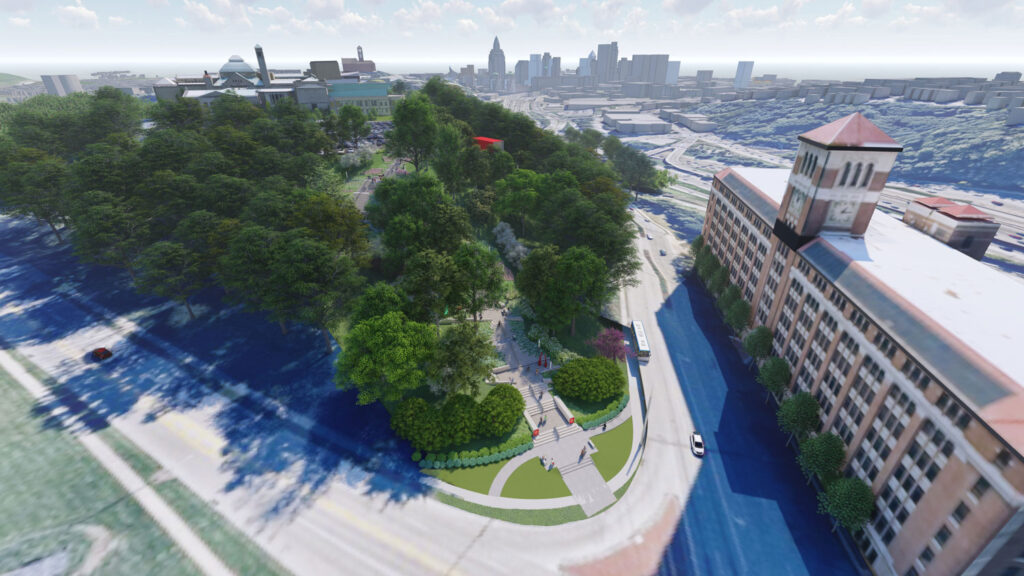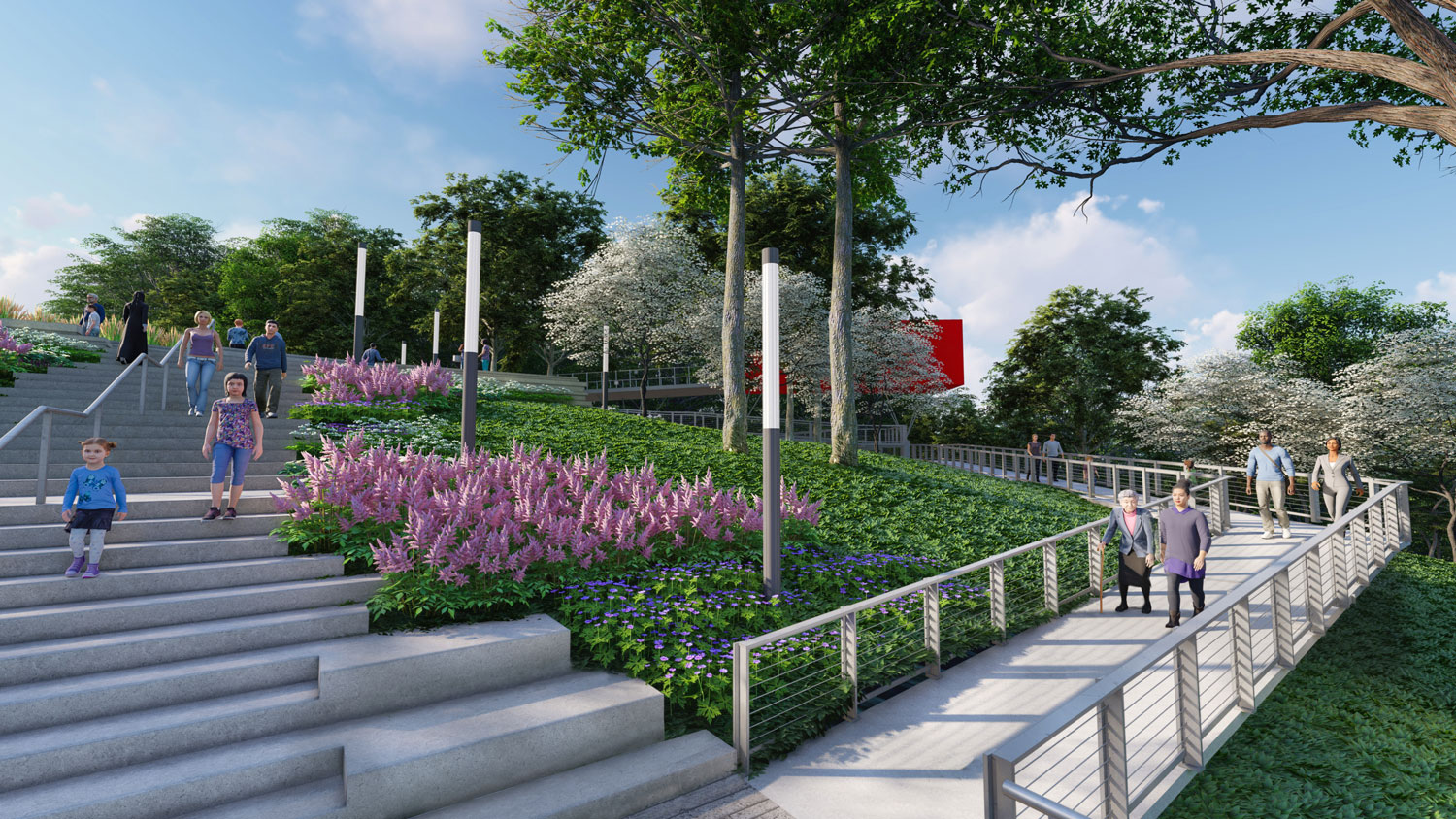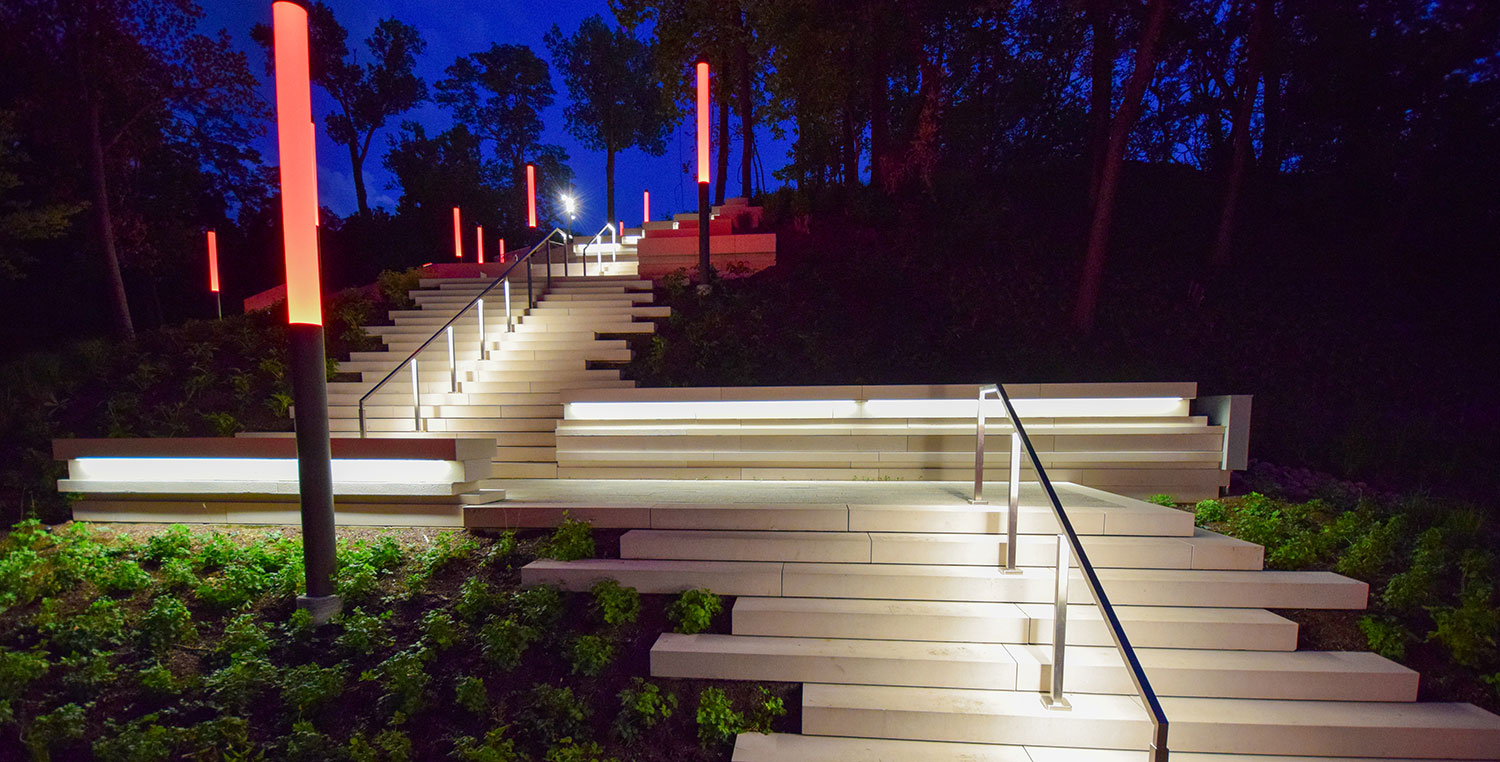

Traditionally, museums have drawn crowds with indoor exhibits showcasing world-renowned paintings and sculptures. The Cincinnati Art Museum, however, embraced an opportunity to encourage recreational art experiences in the great outdoors—and it’s taking the city by storm.
Dubbed “Art Climb,” the permanent installation features steps and landings leading up to the museum’s front entrance. Once visitors climb all 163 steps to the top of the staircase, they can enjoy a panoramic view of Cincinnati’s scenic skyline. They can also listen to music, exercise or sit down for a picnic along the way.
After the sun sets, the staircase transforms into a dazzling masterpiece. Similar to constellations, “Art Climb” emits an ethereal glow while guiding pedestrians to the museum’s front steps—all thanks to an ingenious lighting design specified with Luminii products.
Constructing the 450-foot-long installation and achieving a seamless lighting design required a creative and collaborative approach. The Cincinnati Art Museum worked with a dynamic team of landscapers, architects and lighting designers from Human Nature, CMTA Cincinnati and Leesman Lighting to bring the project to life.
“Limestone outcroppings on nearby hillsides and road cuts inspired ‘Art Climb’s’ design,” said David Whittaker, a landscape architect at Human Nature.
“We wanted to make the experience as place-specific and artful as possible so that it would be an extension of the Cincinnati Art Museum into its surrounding landscape,” Whittaker said. “The materials were selected to complement the limestone and granite used at the museum. As a result, ‘Art Climb’ extends the museum into the landscape to invite people to visit.”
The museum wanted to retain as many trees as possible during the construction process, in addition to removing invasive plants like honeysuckle and diseased ash trees. These efforts contributed to the installation’s unique curvatures.
“We tried to save as many trees as we could, and that effort influenced the footprint of the steps,” Whittaker said. “‘Art Climb’ sensitively weaves its way through the hillside forest and embraces the slopes rather than trying to change them significantly.”













“Art Climb’s” lighting design illuminates more than the installation itself; it also enhances the unique landscape elements and natural spaces around it.
“‘Art Climb’ was not only designed as a bridge between the community and the Cincinnati Art Museum, but also as a bridge between nature and art,” said Chris Bodnar, an electrical engineer at CMTA, a national multi-service consulting engineering firm.
“We wanted to light the pathways in a way that didn’t feel like the lighting was a separate element in the project,” Bodnar continued. “We chose to graze the precast limestone walls to light the pathways and highlight the architectural walls.”
Illuminating a large-scale art installation made of precast limestone comes with its challenges, however. In order to successfully integrate lighting within the precast limestone and hide all wiring for a seamless look, Bodnar and his team had to specify the perfect luminaire—one with a very small profile and grazing optics.
“We were limited by size and what could safely fit in the precast,” Bodnar said. “We also had a very small range of space between the face of the wall and where the luminaire could be housed. That produced a huge challenge with what optics could be applied and still be able to light the entire wall. After some trial and error and a physical mock-up, we determined that the Luminii Kendo RM Wet Luminaire with the Grazer Optic was the perfect product for the project.”
Bodnar and his team coordinated integrated channels within the precast caps to run the wiring. They also utilized larger openings in the sides of the precast for wire connections. The Luminii Kendo RM Wet Luminaire with the Grazer Optic’s small profile made this lighting technique possible, resulting in elegant walls and hidden wires for a clean, elevated look.
“The product lengths were customizable enough to meet the varying sizes of each portion of precast,” Bodnar said. “There were also mounting options that were perfectly suited for our product conditions. Between housings, lumen output and even color, there always seems to be a solution for a unique problem within the Luminii Kendo RM Wet product line.”
Ryan Poulsen, a lighting agent with Leesman Lighting, collaborated with Bodnar to illuminate “Art Climb.” Poulsen recommended Luminii and its Kendo line for a number of reasons.
“Luminii’s product line consists of high-quality, minimalist and clean line products that perform at a high level,” Poulsen said. “This simplicity separates Luminii from the rest by fabricating limitless installation possibilities. I am a big fan of the Kendo family. There is just so much versatility in this lineup.”

Human Nature, CMTA Cincinnati, Leesman Lighting and Luminii worked closely together throughout the duration of the project to complete the installation in time.
“Our experience working with Luminii was second-to-none,” Poulsen said. “Chris Bodnar at CMTA knew early on how fantastic the walls could look with the right type of grazing product. After selecting the Luminii fixture, he obtained fixture samples with varying optical distributions and mocked up the stone wall material to determine the best optical distribution for this application.”
Ryan Raica-Scallan, Luminii’s Northeast and Midwest director of sales, collaborated with Leesman Lighting to determine, customize and manufacture the perfect fixtures for the project.
“Ryan Raica-Scallan did an amazing job collaborating with Luminii’s teammates to provide us with detailed drawings for each run,” Poulsen said. “They notated all pertinent information for each fixture run that we then shared with the specifiers and electrical contractor.”
While talent, skill and creativity played significant roles in constructing “Art Climb,” collaboration was key to the project’s success.
“There are typically a few routes one can take when providing lighting solutions on projects, and each route can provide a different effect and feel in the space,” Poulsen said. “Listening and understanding the end goal is crucial. From there, experience and education help in determining the best solutions moving forward, but always consider requesting a second opinion from a colleague or industry professional before settling. Collaboration breeds creativity.”
The team’s collaborative spirit lives on across “Art Climb.” People exchange ideas, share exercise tips and dance to music throughout installation’s steps and landings. While the recreational opportunities are endless, one thing is certain: “Art Climb” inspires visitors to reach new heights of their own every day.
David Whittaker
Chris Bodnar
Leesman Lighting
Share